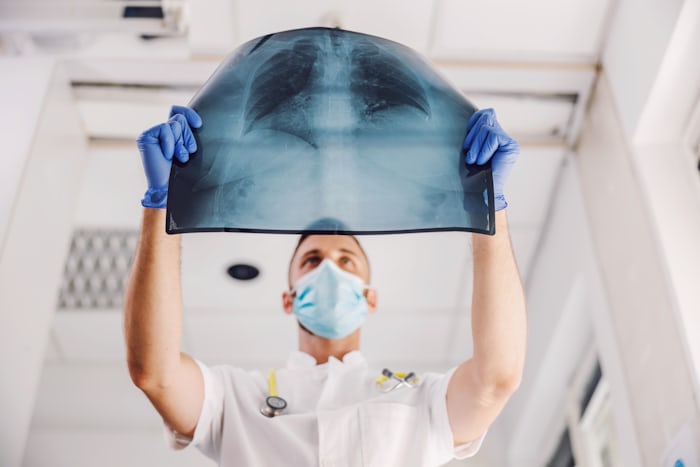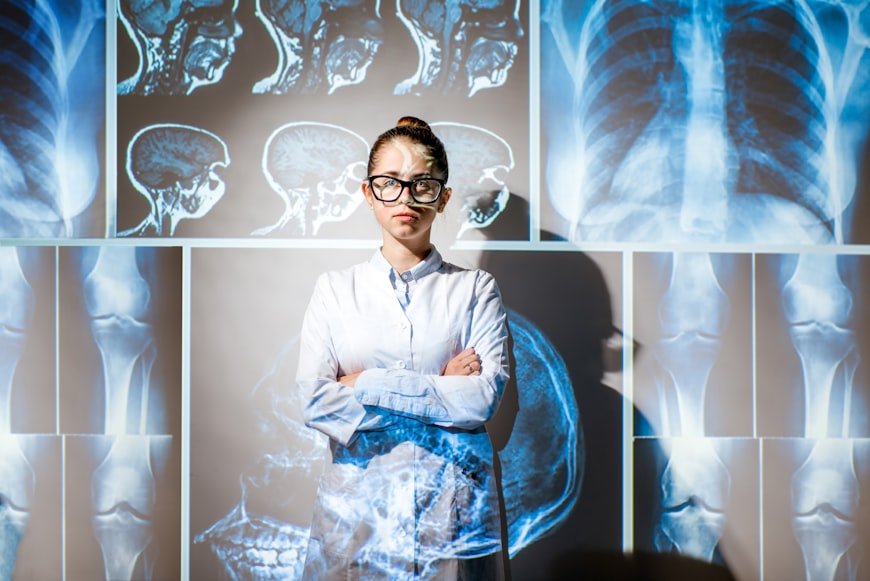The race to harness artificial intelligence for medical diagnoses has accelerated dramatically in recent years, raising a critical question: How accurate is AI in medical diagnosis? As algorithms analyze everything from retinal scans to chest X-rays, healthcare professionals and patients alike find themselves navigating a landscape where silicon might sometimes outperform human intuition.

Imagine standing at a medical crossroads where your doctor consults both colleagues and computers before determining your treatment path. This isn’t science fiction—it’s the emerging reality of modern healthcare. While AI diagnostic tools demonstrate remarkable promise, their integration into clinical practice requires carefully weighing their strengths against significant limitations and ethical considerations.
Table of Contents

Is AI More Accurate Than Doctors?
The question of whether AI outperforms human physicians isn’t simply answered with a yes or no—it’s deeply nuanced across different medical domains and diagnostic contexts.In image-intensive specialties like radiology and dermatology, AI systems have demonstrated impressive results.
A 2020 study published in Nature Medicine showed an AI system detected breast cancer in mammograms with accuracy comparable to radiologists, while reducing both false positives and false negatives by approximately 5%. Similarly, dermatology algorithms can now identify melanoma from photographs with sensitivity rates exceeding 95% in controlled settings.

However, these headline-grabbing statistics warrant careful examination. AI excels at pattern recognition within narrowly defined parameters but struggles with contextual reasoning. A radiologist doesn’t just identify anomalies—they integrate patient history, risk factors, and clinical presentation. The experienced physician recognizes when an unusual presentation requires investigation beyond standard protocols, while AI remains bound by its training data.
The physician-AI relationship is increasingly viewed not as competitive but complementary. At Massachusetts General Hospital, radiologists using AI assistance for lung nodule detection improved their diagnostic accuracy by 14% compared to working alone. The human-machine partnership leveraged AI’s tireless precision with the physician’s holistic understanding.
Medical diagnosis also extends beyond identifying visible patterns. The subtle art of taking a patient history—noting hesitations, contradictions, or emotional responses—remains firmly in the human domain. A seasoned internist might sense when a patient’s complaint about fatigue signals depression rather than anemia, making connections an algorithm cannot.
Perhaps most critically, diagnostic accuracy represents only one dimension of healthcare. The physician who delivers a cancer diagnosis with empathy, answers questions meaningfully, and helps navigate treatment options fulfills a role that transcends pattern recognition. As Dr. Abraham Verghese noted in his influential work on the physician-patient relationship, “Medicine is a complex adaptive system, not just a diagnostic algorithm.”
The most promising future appears to be one where AI serves as a powerful diagnostic assistant, allowing physicians to focus their expertise on integrated care decisions and human connection—improving accuracy while preserving the essence of medicine as a deeply human endeavor.
How AI Learns To Diagnose Illnesses
At its core, AI diagnostic systems are sophisticated pattern-recognition engines built through a process far more complex than simply feeding computers medical textbooks. The journey from raw medical data to actionable diagnostic insights involves multiple sophisticated steps that mirror—yet fundamentally differ from—how human physicians learn.
Most medical AI systems today rely on deep learning, a subset of machine learning where artificial neural networks analyze vast datasets to identify patterns human observers might miss. Unlike traditional software with explicitly programmed rules, these systems essentially “teach themselves” by processing thousands or millions of examples.
The education of a diagnostic AI typically begins with carefully curated training data. For example, a system designed to detect diabetic retinopathy might analyze 100,000+ retinal images, each meticulously labeled by multiple ophthalmologists. During training, the algorithm adjusts its internal parameters when it makes mistakes, gradually improving its ability to distinguish between healthy retinas and those showing signs of disease.
This learning approach differs significantly from human medical education. While physicians build knowledge through structured learning and supervised practice, they also develop intuition through diverse clinical experiences. AI systems, conversely, learn exclusively from their training data, making them powerful within those boundaries but potentially blind to rare variants or novel presentations. The quality and diversity of training data prove critical to AI performance. Systems trained predominantly on data from one demographic group often perform poorly when analyzing patients from different populations.
For instance, dermatology algorithms trained primarily on light-skinned patients have shown significantly reduced accuracy when evaluating skin conditions in darker-skinned individuals—a sobering reminder that AI can inherit and amplify existing healthcare disparities. Modern diagnostic AI also benefits from techniques like transfer learning, where systems trained on one medical task can apply that knowledge to related problems, similar to how a physician might draw on general anatomical knowledge when learning a new specialty.
Federated learning represents another advancement, allowing AI systems to learn from data across multiple institutions without centralizing sensitive patient information. As these systems mature, many developers are exploring explainable AI—models designed to provide reasoning for their conclusions rather than functioning as inscrutable “black boxes.” This transparency becomes essential for physician trust and regulatory approval, allowing human experts to evaluate whether an AI’s diagnostic pathway makes clinical sense.
The most advanced medical AI systems now incorporate multimodal learning, integrating diverse data types—imaging, lab values, electronic health records, and even genomic information—to form comprehensive diagnostic pictures that more closely resemble a physician’s holistic approach.
Success Stories: When AI Got It Right
Ophthalmology
AI has delivered remarkable diagnostic breakthroughs across multiple medical specialties. Google Health’s DeepMind system demonstrated the ability to detect over 50 sight-threatening eye conditions with 94% accuracy, matching world-leading retinal specialists.
Dermatology
Stanford researchers developed an algorithm that outperformed dermatologists at identifying skin cancers, analyzing 129,450 clinical images to differentiate between benign and malignant lesions.
Oncology
IBM’s Watson for Oncology has helped physicians at Memorial Sloan Kettering Cancer Center develop personalized treatment plans by analyzing patient records against thousands of medical journals and clinical trials. Perhaps most impressively, researchers at Houston Methodist used AI to interpret mammogram results 30 times faster than human doctors with 99% accuracy, potentially reducing unnecessary biopsies.
COVID-19
The COVID-19 pandemic accelerated AI adoption when MIT researchers created algorithms that could detect coronavirus infections from the sound of forced coughs with 98.5% accuracy. These success stories highlight AI’s potential to enhance diagnostic speed and accuracy, particularly in resource-limited settings where specialist expertise is scarce.
The Risks of Relying on AI for Medical Diagnosis
Despite promising advances, significant risks accompany AI diagnostic integration. Algorithm bias represents perhaps the most serious concern. Systems trained predominantly on data from certain demographics often perform poorly when analyzing patients from underrepresented groups, potentially exacerbating healthcare disparities rather than reducing them.
The “black box” problem persists with many AI systems, where even developers cannot fully explain how algorithms reach specific conclusions. This opacity complicates physician oversight and raises liability questions—who bears responsibility when an AI system provides an incorrect diagnosis that influences treatment decisions?
Overreliance on AI can potentially erode clinical skills among medical practitioners. As physicians increasingly defer to algorithmic recommendations, their diagnostic abilities may atrophy, creating dangerous dependencies. Furthermore, AI systems typically excel at identifying common conditions but may miss rare diseases or atypical presentations that fall outside their training parameters.
Privacy and security concerns also loom large. The sensitive medical data necessary for AI diagnosis requires robust protection against breaches. Additionally, widespread AI adoption could fundamentally alter the doctor-patient relationship, potentially diminishing the human connection and empathy that remain central to effective healthcare delivery and patient outcomes.
How AI and Doctors Can Work Together for Better Outcomes
The most promising future for healthcare lies not in AI replacing physicians, but in thoughtful integration that leverages the strengths of both. Forward-thinking medical institutions are already developing collaborative models where AI serves as a powerful diagnostic assistant while physicians maintain their essential role as integrators of information and compassionate care providers.
At Mayo Clinic, radiologists use AI systems as “second readers” that flag potentially concerning findings for closer human review. This approach has reduced missed diagnoses while allowing specialists to focus their expertise on ambiguous cases requiring nuanced interpretation. Similarly, the Cleveland Clinic has implemented AI triage systems in emergency departments that help prioritize patients based on risk profiles, reducing wait times for critical cases while preserving physician decision-making authority.

The concept of “augmented intelligence” rather than “artificial intelligence” captures this collaborative spirit. Under this framework, AI handles computationally intensive tasks like analyzing thousands of data points across medical records or identifying subtle patterns in imaging studies, while physicians contribute contextual understanding, ethical judgment, and interpersonal connection.
Medical education is evolving to prepare physicians for this partnership. Stanford Medical School now includes AI literacy in its curriculum, teaching future doctors to critically evaluate algorithmic recommendations rather than blindly accept or reject them. This preparation helps ensure that physicians remain equipped to override AI recommendations when clinical intuition or patient-specific factors suggest alternative approaches.
The most effective collaborations recognize that AI and human physicians possess complementary cognitive strengths. Algorithms excel at consistent application of established protocols and detection of patterns across vast datasets, while physicians bring creativity to unusual cases, ethical wisdom to complex decisions, and empathetic presence to difficult conversations.

Conclusion
As AI continues its march into medical diagnostics, we find ourselves at a pivotal moment that demands both optimism and caution. The technology offers tremendous potential to enhance diagnostic accuracy, expand healthcare access, and free physicians from routine tasks to focus on uniquely human aspects of care.
Yet this progress requires careful navigation of serious challenges—from ensuring algorithmic fairness across diverse populations to maintaining appropriate human oversight of AI-assisted decisions. The most successful implementations will likely be those that view AI not as a replacement for medical expertise but as a powerful tool within a broader ecosystem of care.
Perhaps the most profound question isn’t whether AI can match or exceed human diagnostic accuracy, but how we might use these technologies to create a healthcare system that combines technological precision with human wisdom. In that balanced approach lies the potential for something truly revolutionary—not just more accurate diagnoses, but more compassionate, accessible, and equitable care for all.
As patients and healthcare stakeholders, we would do well to advocate for AI systems that augment rather than diminish the human dimensions of medicine. After all, at our most vulnerable moments, we need not only accurate diagnoses but also the irreplaceable human connection that reminds us we are more than the sum of our symptoms.

